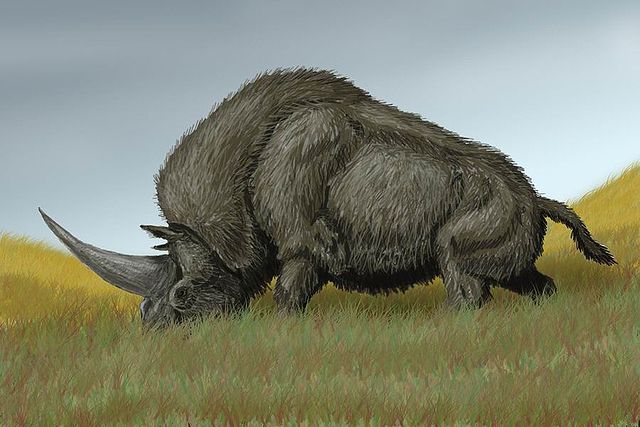Over two-and-a-half years ago, we wrote a post about a unicorn. The Siberian unicorn, to be precise. An animal that, to be even more precise, was really a giant prehistoric rhinoceros.
At the time, we were just excited that this creature—thought to have died out 200,000 years ago—may have existed as recently as 29,000 years ago. This would've meant that it was alive at the same time as Homo sapiens, a.k.a. modern humans, a.k.a. us. Guys, we lived with unicorns!
But that study was still pretty imprecise. Now a new study confirms that humans and the Siberian unicorn indeed shared a spot on this planet. Not only that, this was one unique animal.
DNA shows the way
Where did this info come from? Where else? DNA!
A large team of scientists gathered 23 different samples of Siberian unicorn (scientific name Elasmotherium sibiricum) bone to conduct the study. What did they find? For one, they discovered that the samples dated back to between 35,000 and 36,000 years ago. This means that our dreams of unicorns and humans playing together remain intact. (Even if 'playing' with a three-and-a-half-tonne beast is not really recommended...)
They also discovered that the Siberian unicorn was not a close relative of modern rhino species. Instead, it was its own unique strain of animal, which split off on the genetic family tree from other rhinos around 40 million years ago.
Couldn't adapt
Activists are fighting to make sure that modern rhinos don't follow the same path as the Siberian unicorn. (Getty Embed)
Of course, even if our ancient ancestors were able to catch a glimpse of this animal, it is clearly not around today. Scientists theorize that these rhinos were simply unable to adapt to the changing vegetation. At the time, colder climate meant that the area's grasses were disappearing, and most of the vegetation was found in higher shrubs. Why is that change significant?
The Siberian unicorn's head and horn may have literally been too heavy to lift up and grab a bite! Though an actual horn fossil hasn't been found yet, the base of the horn on the animal's skull suggests that it was around a metre (3.3 feet) long—a lot larger than the average of most modern rhinos. The animal—the size of a small adult elephant—may have also simply been too big a beast to survive on this shrinking buffet.
Either way, given the fragility of modern rhino populations, it's probably a good thing that we're getting this reminder of how fragile a species' stay on Earth can be.
Long live rhinos and (the memory of) the Siberian unicorn!
 An artist's impression of the Siberian unicorn. (Wikimedia Commons)
An artist's impression of the Siberian unicorn. (Wikimedia Commons)










I LOVE the magic in the idea of unicorns, but this takes the cake! No matter what you tell me, I will forever feel the magic of unicorns ?! 😀
This news is so surprising! 😀
WOW! That’s so cool! ?